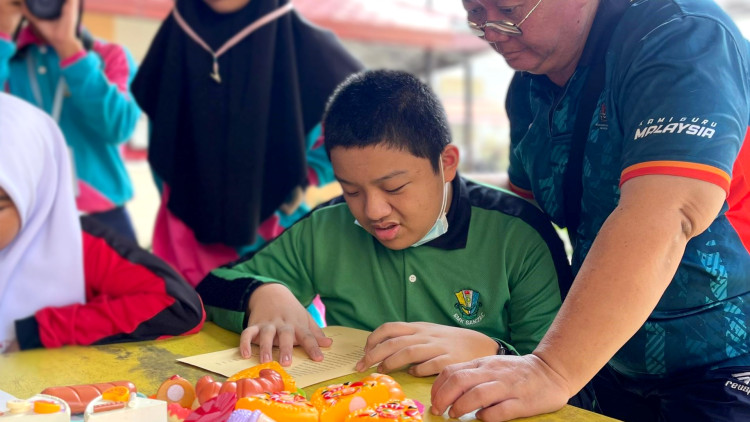An IAEA initiative in Malaysia is seeking to create greater inclusivity in science, technology, engineering and maths (STEM) education with the support of a regional IAEA technical cooperation (TC) project on Strengthening Nuclear Science and Technology (NST) Education at Secondary and Tertiary Levels. The project recognizes the pivotal role that nuclear science plays in achieving several of the United Nations Sustainable Development Goals (SDGs), particularly in health, food security, energy and environmental sustainability, and has the goal of reaching 10 million students in Asia and the Pacific. The initiative will now be extended to other schools in the region with the aim of including more curricular activities for special needs STEM students, marking a significant stride toward universal inclusiveness in nuclear science education.
This month marks the International Day of Persons with Disabilities, which falls on 3 December. Utilizing knowledge and educational resources gained from the IAEA project, chemistry teacher Kuit Vui Ket at the SANZAC school initiated a project in Malaysia - creating greater inclusivity for neuroatypical and special needs students in STEM subjects, an often overlooked aspect of education. The project involved implementing supportive policies and legislation, developing accessible learning materials, and conducting comprehensive teacher training programmes.

A teacher reviews a list co-created by a special needs student and his mentor, exploring the safety of irradiated foods and fostering a deeper understanding of nuclear science and technology. (Photo: SANZAC Secondary School, Malaysia)
The project integrates empowerment and enablement strategies, setting a benchmark for inclusive STEM education. Suriani Sani, a parent whose child participated in the programme, said, "The hands-on learning experiences in the nuclear science and technology programme have been invaluable. Our child has developed practical skills and a deeper understanding of the subject matter."
Speaking of their experience in the classroom, a student said, "Learning about nuclear science and technology is so much fun! The hands-on experiments and interactive lessons make me excited to come to class every day."
A key initiative which falls under the aegis of the scheme is the NST-STEMclusive Project, which is centred around special needs STEM students. This project strives to create a learning environment that ensures no student is left behind. In particular, the project focuses on the development of diverse learning materials, tailored to the diverse needs of special needs students. The NST-STEMclusive Project invests in creating adaptable and accommodating materials, ensuring meaningful engagement with the curriculum for every student.
Vui Ket said, "This project acknowledges the unique strengths and potential of special needs students in STEM fields, seeking to unlock their talents and foster their interest in nuclear science."
The IAEA has been at the forefront of supporting professional training in NST education through various technical cooperation projects, aiming to overcome resource limitations, workforce challenges, and conflicting demands that impact learning and facilitation, particularly in the field of NST.
The IAEA's engagement symbolizes a commitment to dismantle barriers and create a future where diversity is not only acknowledged but seamlessly integrated into the fabric of education.






